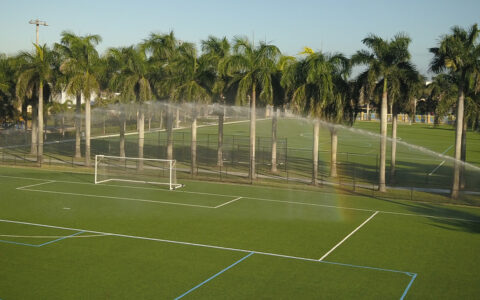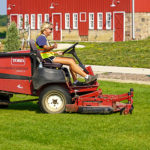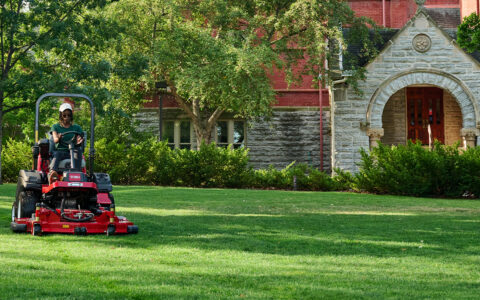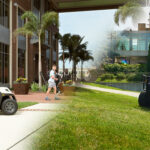Community Works Together to Revitalize Century-Old City Golf Course
City Park Golf Course in Denver, Colorado, is more than a municipal golf course. It’s a legend. Situated in the heart of the city, the 18-hole, urban parkland-style course has been a popular destination since 1913.
From the fall of 2017 to the fall of 2020, City Park underwent a complete redesign to revitalize the course. The project improved facilities while integrating a stormwater detention area to help mitigate flood risks in surrounding neighborhoods.
Today’s renewed site blends historic glimpses of the old course with modernized amenities that will be enjoyed for generations to come. However, getting there was not without its challenges. To make the project a reality, City Park Golf Course, area residents and the City of Denver had to come together to find common ground.

Overcoming Overflow
In essence, the City Park Golf Course redesign came about from a need to protect neighborhoods from being submerged in rainwater during major storms.
“Urban flooding is becoming an increasing problem as hardscapes prevent rainwater’s natural infiltration, which in turn leads to more pressure on storm water systems,” says Pamela Smith, Director of Agronomy for Denver Golf. “Climate change is also a factor as less frequent but more intense rain events challenge the capacity of decades-old infrastructure. The last thing we wanted to do in an urban environment was take away people’s housing options. So, the decision was made to use the golf course for flood control. And that was the inception of the project.”

Initial Opposition
While the purpose and goals of the course redesign were well-intentioned, many community members didn’t want the century-old course to be changed. City Park Golf Course representatives engaged in a lengthy collaborative process with the public, neighborhood representatives and the golf community to come up with a plan to make everyone happy.
“Anytime you have a construction project in the middle of a dense urban area, you need to be transparent with the community on what’s happening,” says Leslie Wright, Director of Marketing, City of Denver. “In addition to community outreach meetings, we had tours and anyone in the community could come see what’s going on. Being transparent and allowing residents to be on the property, see what’s happening and voice their opinions was super important.”
Preserving the View
Understandably, one of the main concerns of residents was that they didn’t want their view to change. For instance, homeowners who would normally have a view of downtown or the mountains wanted to maintain that. So, the golf course designers, who were also the builders, worked hard to preserve it.
“The designers put up balloons representing roof lines during the design process to ensure historic viewsheds were preserved,” Smith explains. “Then they took pictures of the balloons to show how mountain views would remain unobstructed. This is how we ended up with a very low-profile clubhouse.”
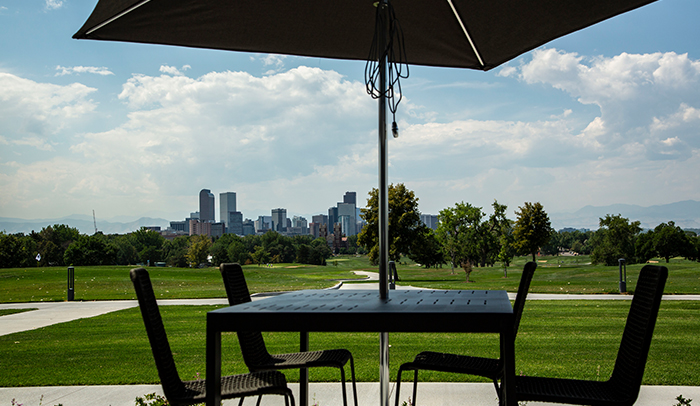
Dealing with Debris
The stormwater detention area poses some unique issues for the grounds crew. When the course floods, the water rises and leaves a lot of debris in the waterway. Garbage and debris are collected in an underground vault that’s about the size of a bus, and it needs to be cleaned out with a vacuum truck after every storm event. Another bay also needs to be cleaned out twice a year with excavators and dump trucks.
“It’s a lot of work,” says Colin Murphy, Golf Course Superintendent, City Park Golf Course. “But in the end, it’s pretty cool because it’s eye-opening to see how much debris and trash is in stormwater sewers. It’s human garbage like bottles and bags along with leaves, twigs and branches that fall off trees on all the city streets and parking lots, and it all gets tumbled together and mulched up. So, basically, we filter all of that out before it enters the river system.”
Keeping the Grass Gorgeous
The water detention area and the overall course design also create challenges for City Park’s grounds crew to keep the greens alive and maintain the stunning conditions players expect.
“Because of the flooding and the silt deposits on the course, keeping the turf grass alive and up to standards requires added work,” says Murphy. “Our crew does a lot of extra aerification and top dressings. It can get pretty wet, so we have to get in there when it’s wet but not too wet or we’ll cause more damage. Then we punch holes, so we air out the soil to get it to dry faster and not damage the grass. And we do it while keeping the course open.”
The crew uses the Toro Lynx® Irrigation System to help address the unique challenges and changing priorities the golf course faces every day. They also rely on Toro® mowers and other Toro equipment to manage the grounds.
“Even though the course is naturally wet a lot of the time, the Lynx system gives us essential information at our fingertips that tells us when to turn the sprinklers on and off as needed,” says Murphy. “For instance, we can shut off certain areas after a storm event, but if other areas of the course still need water, we’re able to put water there. It’s a lot to keep a handle on, but the system makes it easy to monitor everything.”
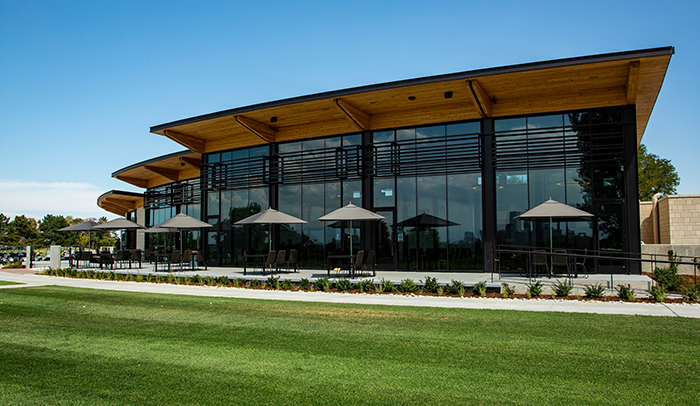
Working Together
What’s been especially impressive about the City Park Golf Course redesign is how so many different organizations and community residents worked together to make it successful — and to make it a tremendous asset for golfers and community members alike.
“The reimagined City Park Golf Course honors our legendary past while looking to the future,” says Smith. “Our hope is that guests see that we’ve made good on our promise of keeping a community and family focus.”
For more information about Toro irrigation and the Lynx Central Control System, contact your local Toro distributor.

